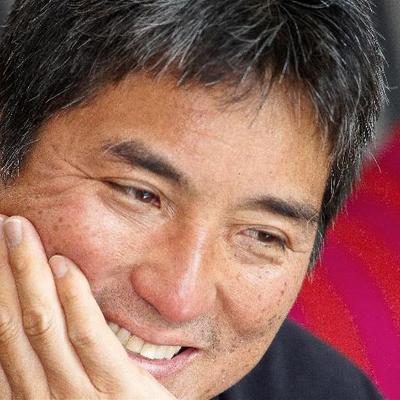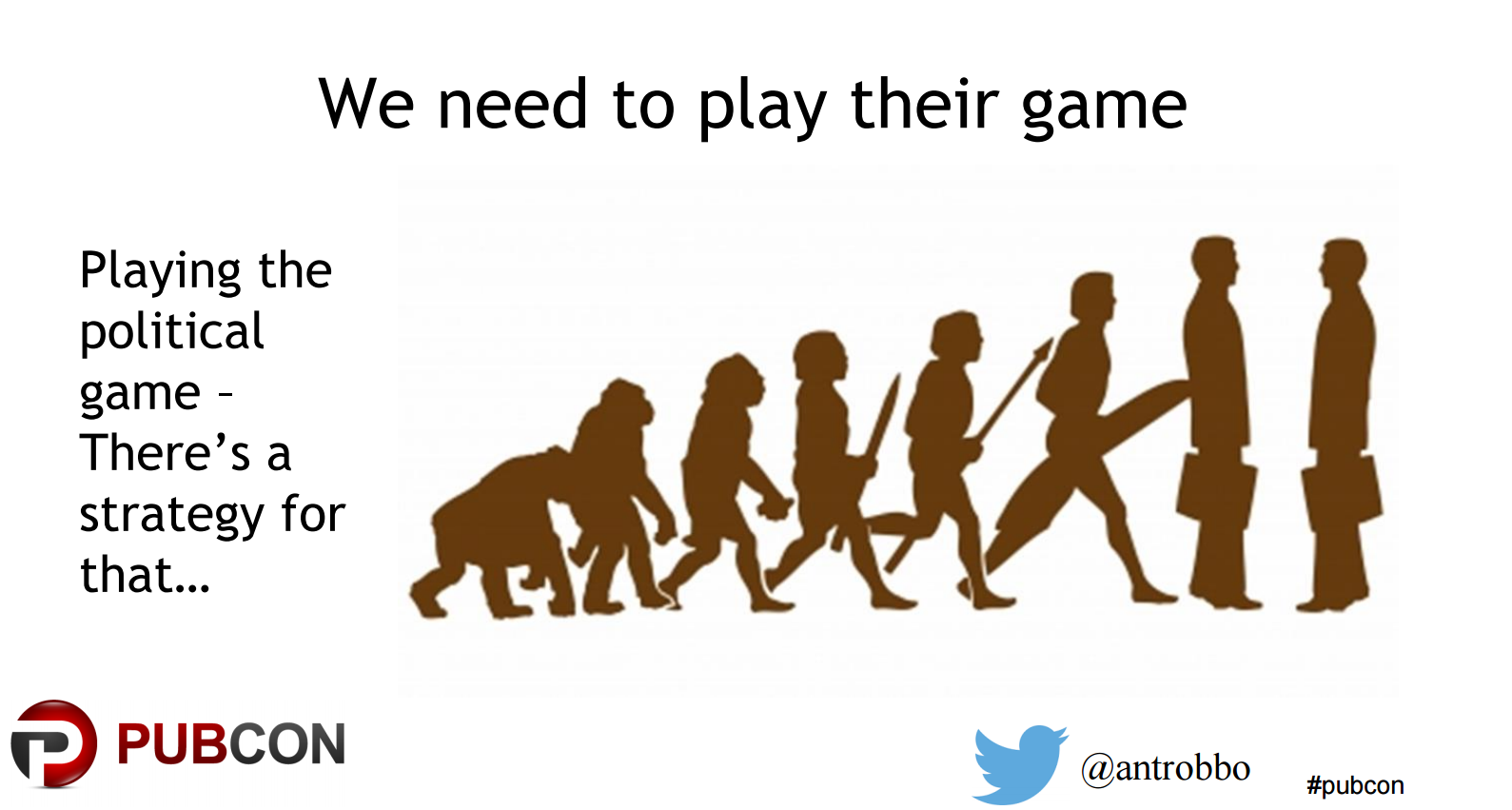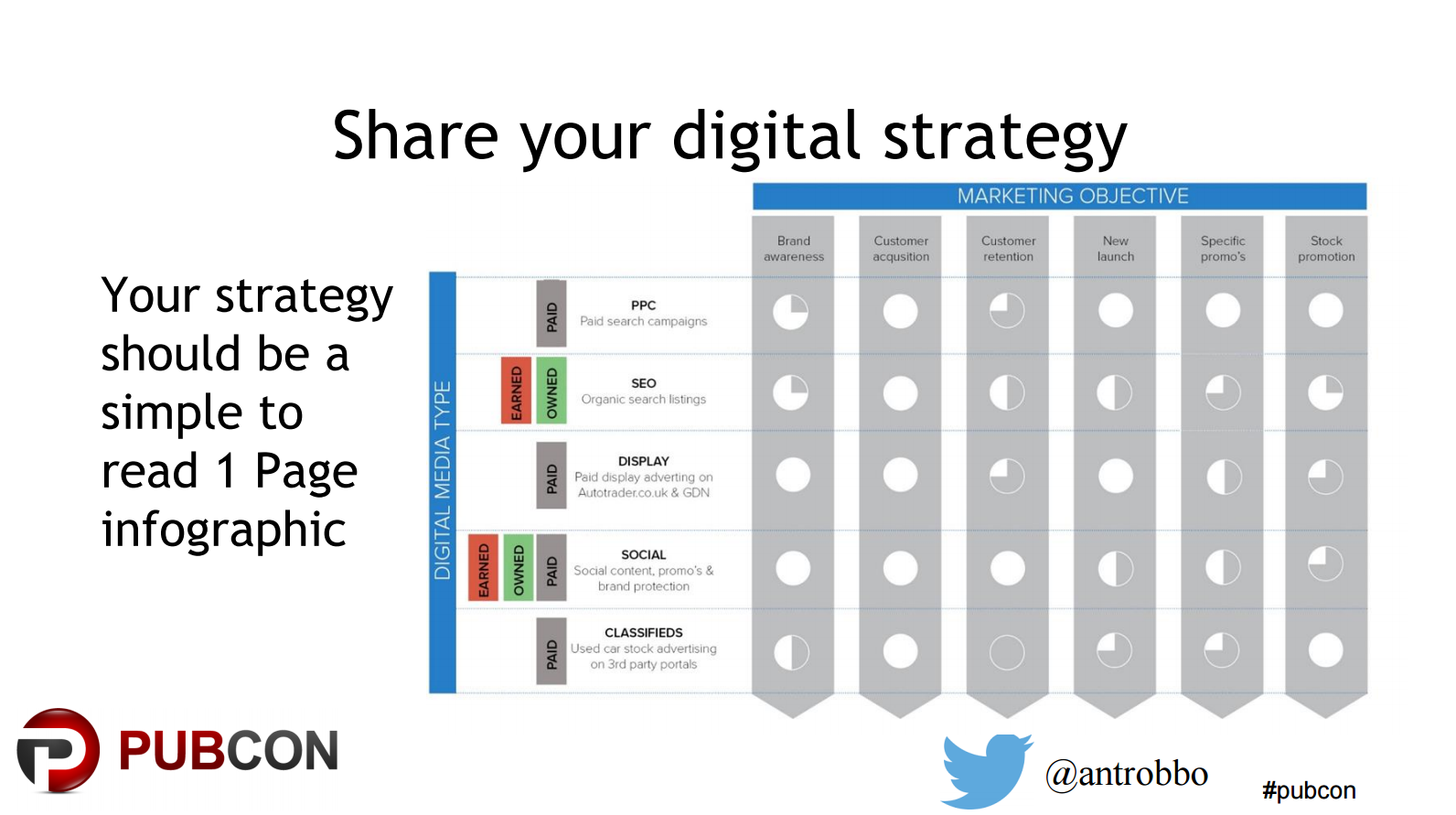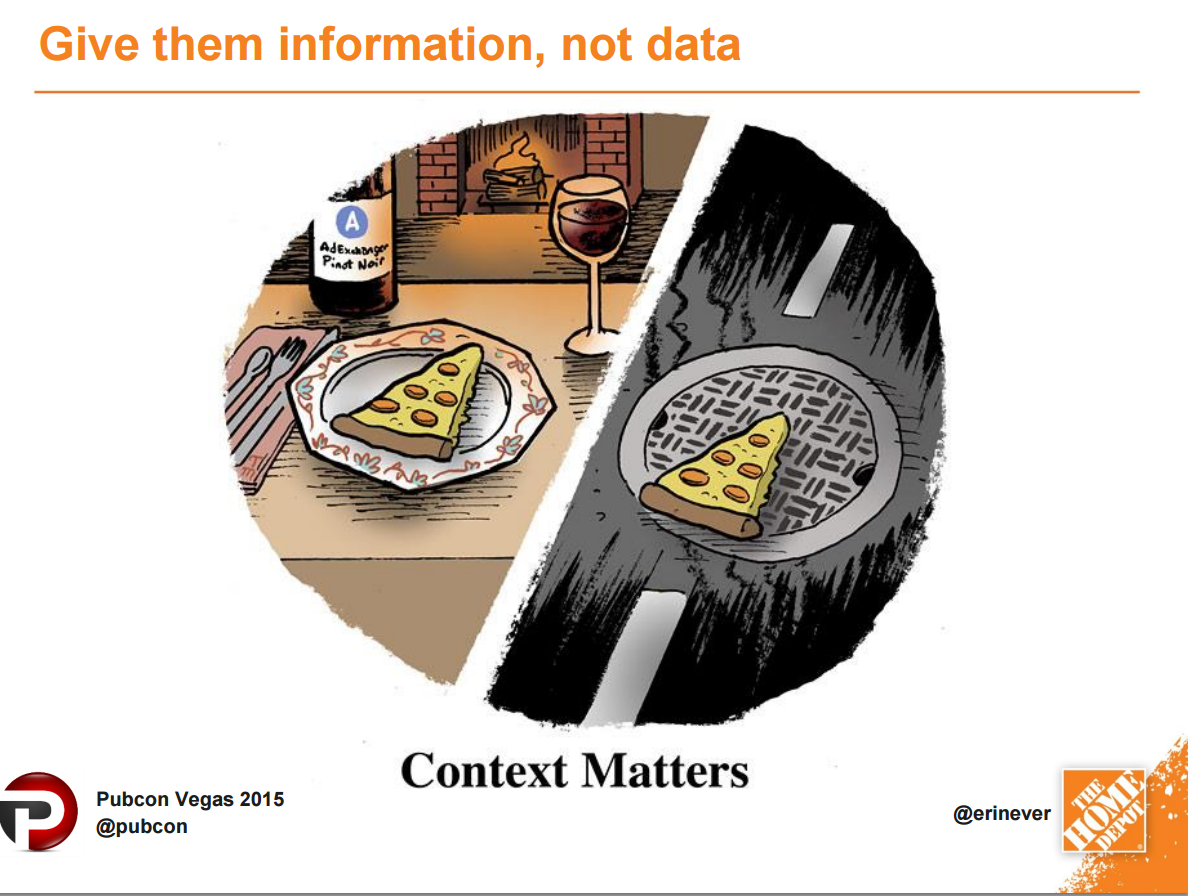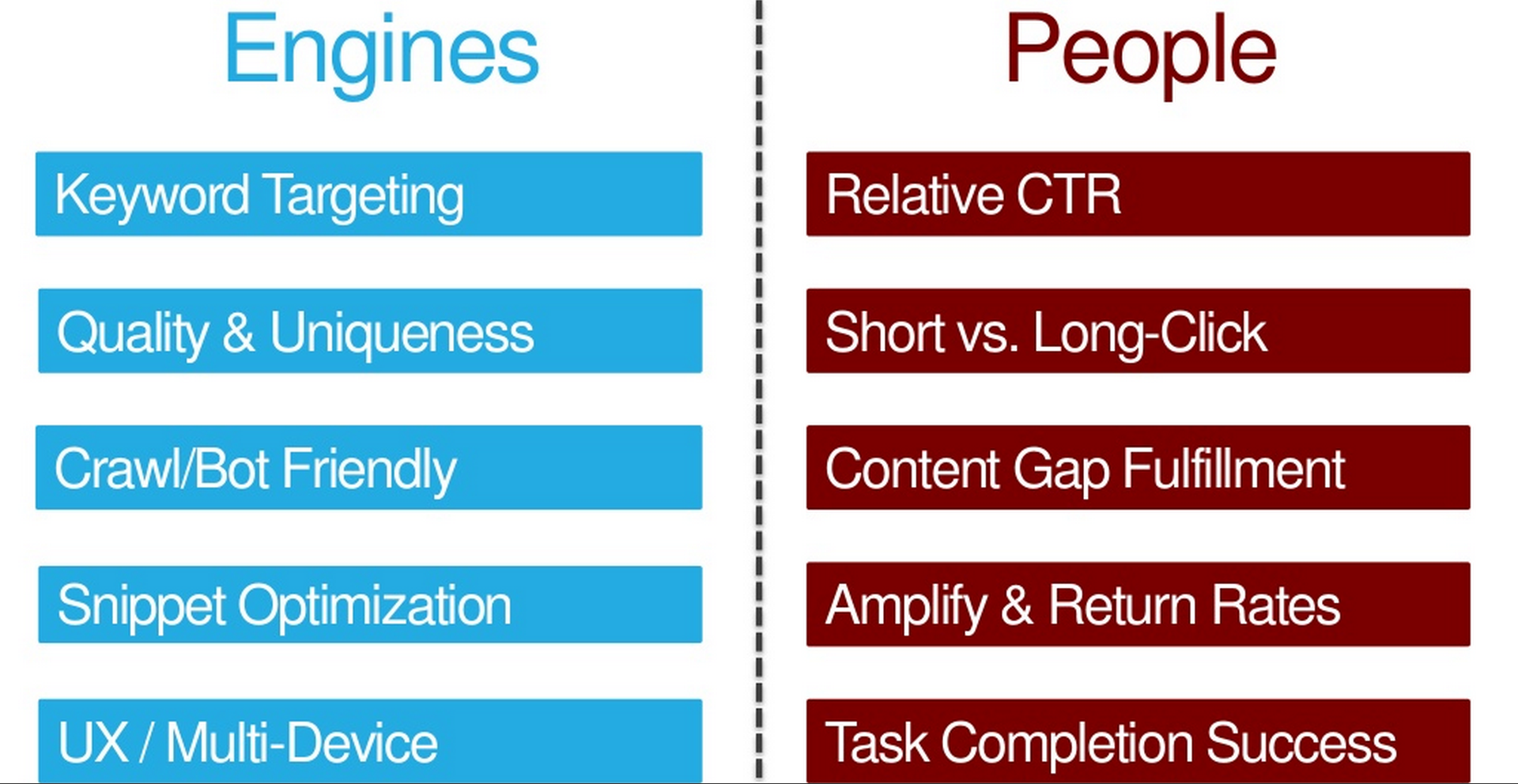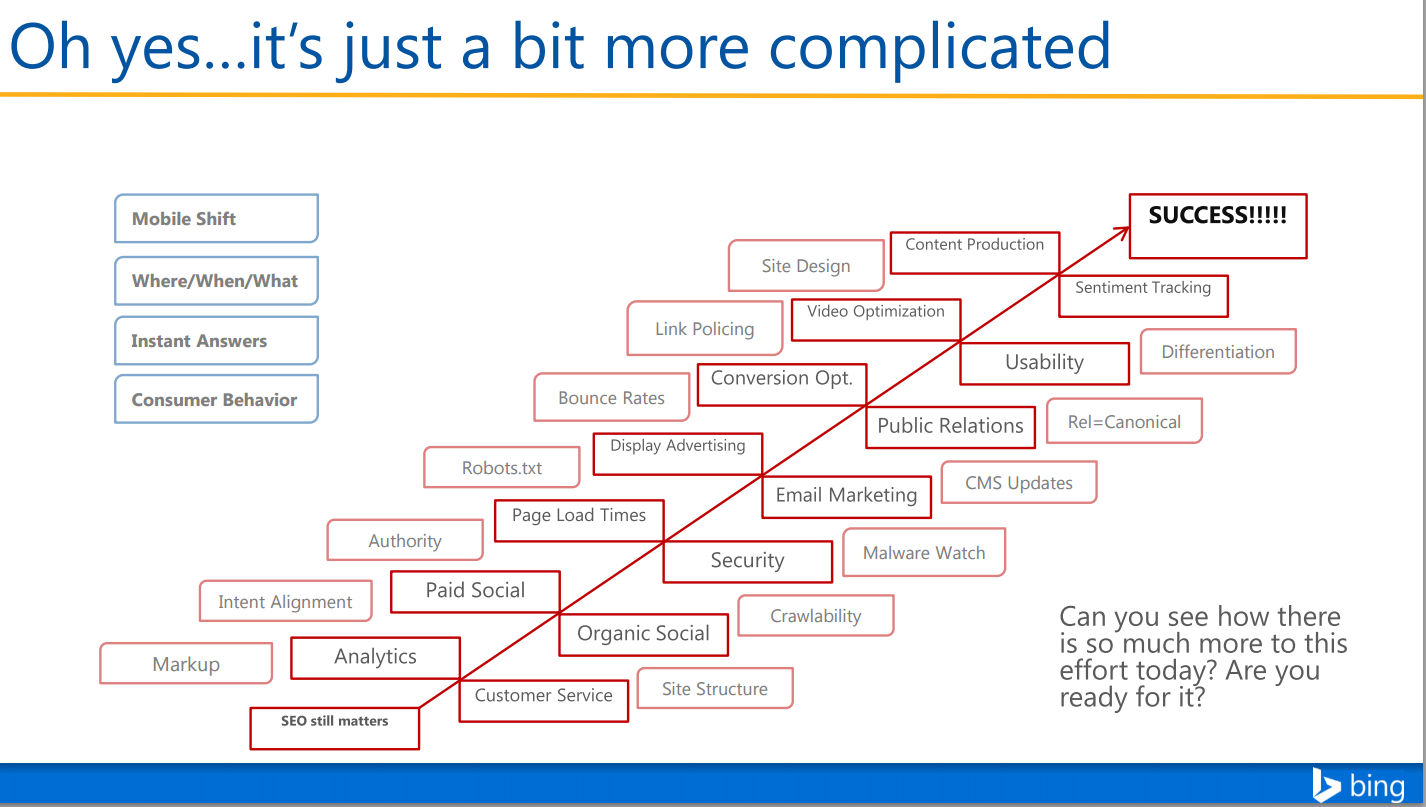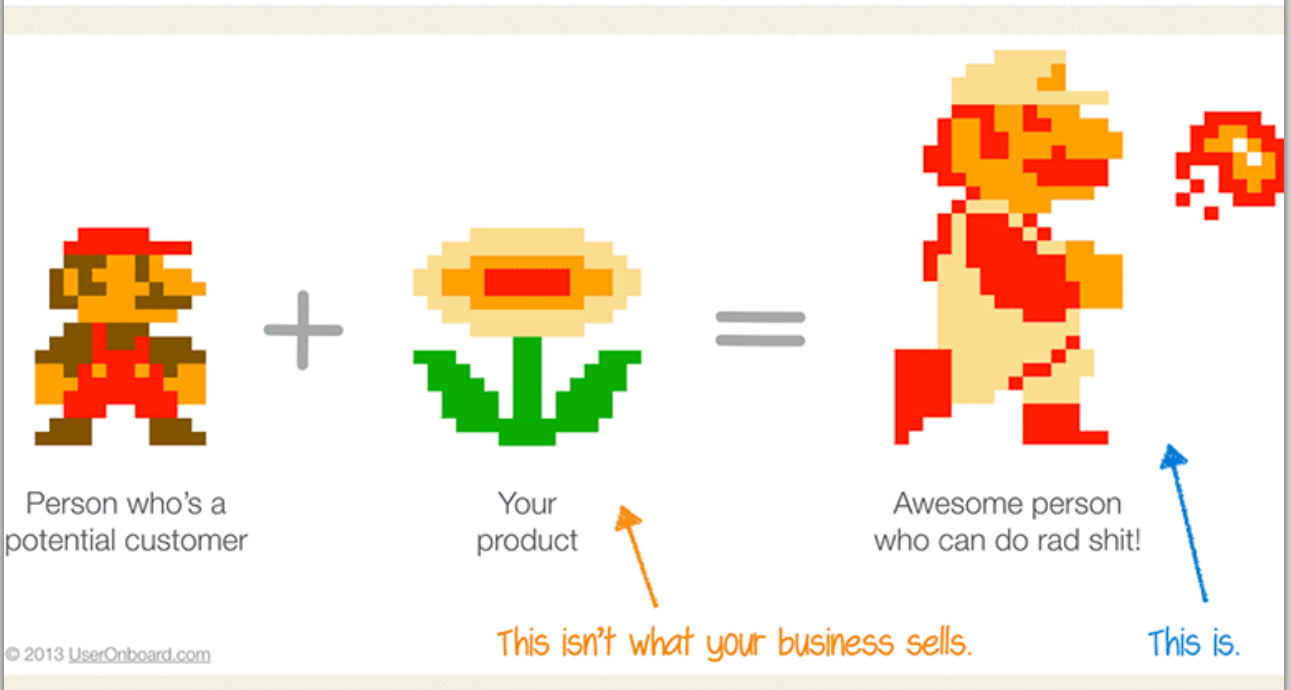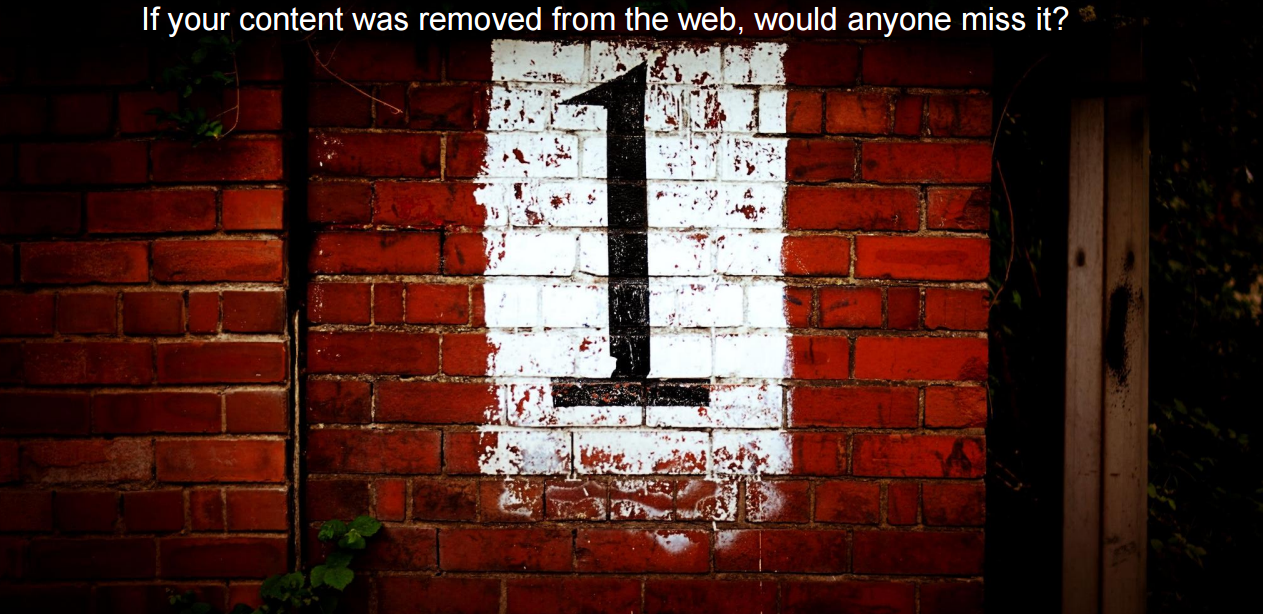Recap Pubcon 2015 and US Search Awards 2015
22. October 2015The nomination of the Trisolute News Dashboard for the US Search Awards 2015 was a brilliant occasion for us to take part in Pubcon, which took place in Las Vegas from October 6th – 8th. I would like to mention some of the presentations that stood out in my opinion (with 8 parallel sessions, you have make selections, of course). I would also like to link to those presentations where links are available. Furthermore, I will discuss the well-attended keynotes.
Pubcon started with Guy Kawasaki (@guykawasaki), a speaker who has been seen in Europe before (e.g. at LeWeb). He worked for Apple for many years, and is now Chief Evangelist at canva. Guy presented topics, which were not really new: relevance of avatars for Social Media, the most important rules for presentations and business cards, and recommendations for posts in the different social networks. This does not sound too exciting, but his keynote was not lengthy or boring at any time though; but one felt either confirmed about doing things the way Guy recommended to do them or was inspired for improvement.
What were his main statements?
- Keep an eye on the congruence of your avatar beyond the range of different Social Media (one thing to think about for me) – the user does not differentiate between business and private, or similar individual differences.
- The avatar should be lit from the front and mainly show the head. Family, pets or other things should not be in the avatar picture in Guy’s opinion (well, what does your avatar picture look like?).
- The background picture should be used to tell a “story”. Here, you can show that you are communicative, an active person, etc. Moreover, the background picture should have the right format for the respective network (maybe canva can help with that? :))
To put his recommendation in a nutshell: You do not know, which network will be visited and looked at first – the first impression stays. This impression should be “likeable, trustworthy, and competent”.
Guy’s advice and recommendations concerning the design of business cards (“Evernote has to be able to read them”) and presentation slides (10 pieces at max, inevitably black or dark background,) is best to see in his presentation. My moments of enlightenment were limited here. I found his message “In your presentation, get to the demo asap – if you have one” much more exciting.
His main aspects around social media posts were:
- consider the NPR model
- rate yourself according to re-tweets and shares
- have at least one picture (it can be four on twitter by now)
- and optimize your frequency.
Here it should be said, that Guy Kawasaki re-posts some tweets up to 8 (!) times. He advised the audience not do this, but he thinks 3 – 4 times makes sense, because this way you can reach different people in different time zones (this would apply to a world-wide network).
My conclusion: well-known topics – good details and very enjoyable presentation. A good start of the conference.
You can find Guy´s slide deck here: bit.ly/1LfKpoC
The first session slot I attended was called “Building Great Content” in Track Content Marketing. I did like the presentation of Stoney de Geyter (@stoneyD) „ How to Mine Your Own Mind For Great New Content Ideas” very much, because it showed me various points, where I do not use the created content as systematically and efficiently as possible. His advice for effective Content Production was for example:
- Rewrite old blog posts
- Turn a comment into a full post
- Turn a tweet into a blog post (von 140 to 600 words)
- Turn one post into many posts for a new audience (reach different readers each time)
- Turn a presentation into a visual blog post
- Turn blog posts into presentations
- Publish an email response as a blog post
- Turn sales content into blog posts
His most important point was repeatedly: “It’s a different audience every time”.
You find Stoney’s slides here: ppmkg.com/minemind
The next session slot I would like to write about is “Finding the Facebook Influencers” by Dennis Yu (@dennisyu) and Michelle Held (@metrony). The two of them deal with the topic of how to turn large amounts of people and data (e.g. more than a million fans of a baseball team) into meaningful and targeted Facebook campaigns. They described systematic processes that use specific tracking pixels on the homepage, and the consideration of LinkedIn and Twitter data in order to carry out targeted campaigns with the Facebook Business Manager. Dennis Yu of Blitzmetrics presented single steps of this process using example data, and I was really impressed by the systematic and analytic way of carrying out every single step. According to Dennis Yu, systematic analysis is able to extract data from the Facebook Business Manager that were not available before.
“How to prove the value of SEO to C-Suites” by Erin Everhart (@erinever) and Anthony Robinson (@antrobbo): The question of how to make SEO activities understandable for the top management is always interesting and specifically relevant for Inhouse SEOs. At this session, the number of Inhouse SEOs and agents almost equaled 50:50. Anthony Robinson described the steps that he used to present the relevance of SEO to his top management in the past. The main points were:
- a short and succinct presentation
- a big focus on monetarisation
- and the opportunity for the top management to relate to one or two topics.
- his goal was always to create a “fear of loss”, i.e. the fear of the top management of losing some of what the SEO activities created, when, e.g., the IT changes something.
Some of the charts reminded me of how we dealt with this topic at my former employer. The ones that have heard Jens Fauldrath in Germany speak about this topic, would have found similar ideas in Anthony’s presentation, even though they probably do not know each other or their respective charts.
Erin Everhart of Home Depot’s committed presentation completed these statements and experiences. At Home Depot, the traffic ratio between SEO and SEM is 90:10, and the budget ratio is the other way around: 10:90. Amongst other things, she explained her way of approaching the problem of time lags of SEO measures. She claimed that one of her most successful strategies is the division of big tasks / topics into small pieces, because it is easier to get commitment and budget for them. Success control is also easier, and with every little success, the top management puts more trust into the SEO team and is hence more willing to carry out other measures or raise the budget. She was also effective with pointing out successful competitors in order to get the attention of the top management. Her recommendations were (amongst others):
- Give them information, not data
- Present specific, manageable actions
- No super long lists of measurements
Next was the keynote of Rand Fishkin (@randfish) “SEO in a two algorithm world“. Many might have seen and heard Rand. He was amusing and entertaining as always. His main topics were a higher use of machine learning in the Google Search algorithms, and the – from his point of view – necessary change in SEO. There are new foci in On-Site SEO (see 1st chart), and from Rand’s point of view, the SEO practise should not only consider the KPI for engines, but also the KPI of people (see 2nd chart).
You find Rand’s Slides at: bit.ly/twoalgo
The keynote of Duane Forrester (@duaneforrester) of Bing (until end of November) started with pointing out the relevance of Generation Y / Millenials for the future of the digital market through their rising wealth, the rising relevance of mobile data, and pointing out the enormously rising amount of data and their relevance (“Data is the new oil”).
Apart from self-driving cars, Duane sees a trend towards the Personal Digital Agent. The charts show a pretty good summary of his presentation.
You find the slides at: http://www.slideshare.net/duaneforrester/why-you-look-forward
The last keynote I would like to discuss is the one of Wil Reynolds (@wilreynolds). I had never heard Wil before and was fascinated by his presentation.
Coming from his thesis that free traffic through SEO is limited, Wil suggested a different point of view. Taking his thesis “People don’t buy products, they buy better versions of themselves” as a starting point, every content creation should be checked for “bringing people to a different level”. He used the following picture a few times:
He went on with a question that stuck in my head: “How much has Google bought from you and how much have people? “, and proceeded to the question “How much time have you spent on what makes people buy? “.
According to Wil, every content creation is about content that is worth to be looked at and used by people – content that helps understand or solve a problem. Therefore, he suggests producing less content, but making sure that it has the required “Level up” effect for a special group of people. On his final chart, Wil showed the question that should always be asked during content creation:
All in all, Pubcon was very interesting, and we got many useful impulses. The manifold impressions will surely help us have many new ideas.
A recap of the event must not end without mentioning the open-mindedness of the participants and the resulting fun of networking. The big keynotes usually start with introducing oneself to three other participants and do some small-talk. This is a bit weird for a German at first, but on day two it is already normal. This way, one hurdle is already cleared, and the open-mindedness was positively noticeable over the days. The network events supported this, so by now I do understand why the organisers of Pubcon always put so much emphasis on networking in their posts and publications. I found it very positive and comfortable, and it was fun.
In the beginning I mentioned that we went to Las Vegas because of the nomination of the Trisolute News Dashboard for the US Search Awards in the category “innovation”. The award celebration took place within Pubcon at a lovely gala, and all important US agencies and all important tool providers were there. Unfortunately, we did not win (yet), but we are happy to congratulate Majestic, the winner of this category. Being nominated in this category (just like for the SEMY in Germany and the UK Search Awards) was a great appreciation of our work. We are highly motivated to continue going our way and work for our customers with all our forces!

